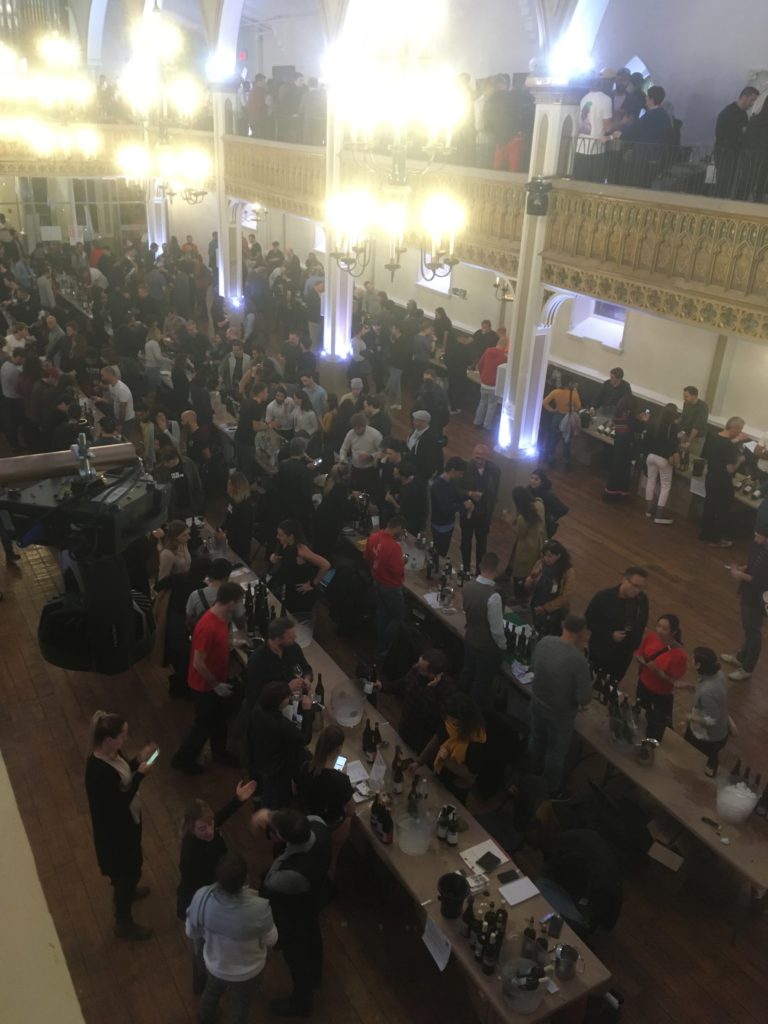
With back-to-back-to-back salons in Montreal this fall, there was plenty to wade through for suggestions for what to drink right now. I headed into the two days of the natural wine salon, Raw wine, fully energized, but ended up not making it to RASPIPAV (the private import salon) or La Grande Dégustation because of an eye problem. Too much information? Didn’t want you to think I couldn’t handle it.
Fortunately, there was plenty at RAW to assemble a list of great bottles. Most are private import and many are already sold out or not available until December or January (these aren’t massive producers), so these suggestions are for the planners more than the person who wants to run to the SAQ for a last minute bottle to take to a party. They’re all organic or biodynamic and natural wines, certified or not. I’ll be ordering a couple cases myself, so if you want to share some, let me know!
Let’s start with some bubbles.
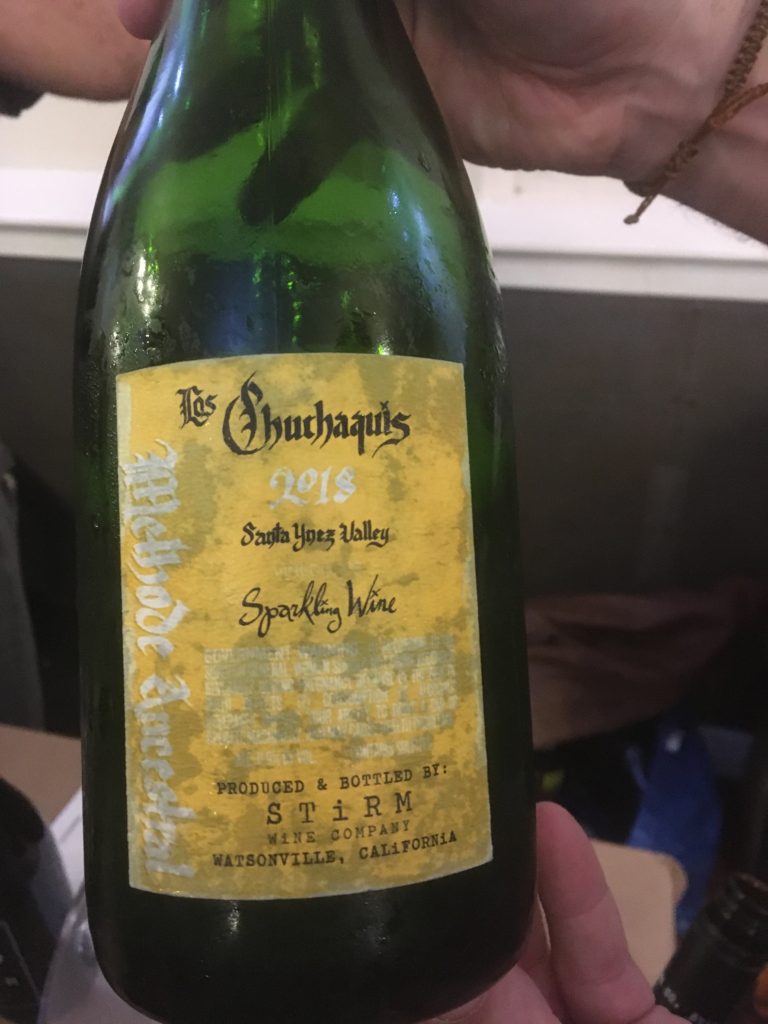
Stirm Wines’ definitely gets points for the coolest bottle. That has a little to do with the Gothic-style script and a little more to do with the fact that the grapes for this sparkling wine are from Watsonville, CA, where I have no family, but imagine I could.
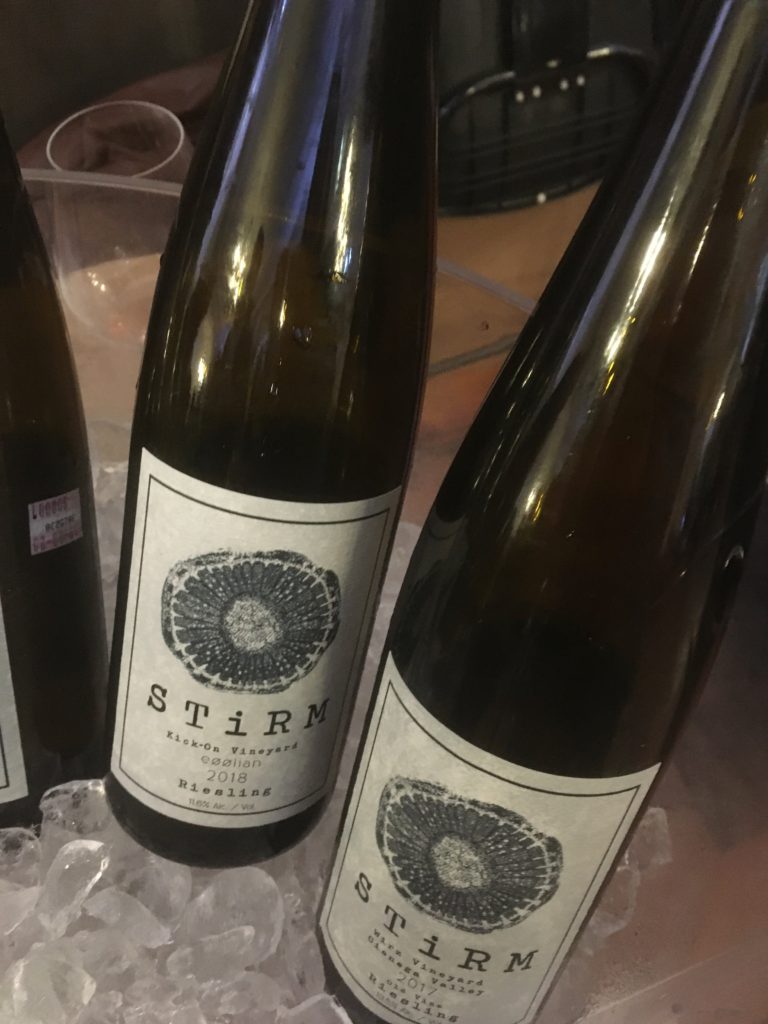
My favourite Stirm bottle was one of its Rieslings. The 2018 Kick-On Vineyard ‘eøølian’ Riesling. There’s very low residual sugar, so it’s not an overly sweet Riesling like you might expect from the biggest selling Alsatian and Ontario Rieslings. To keep it from being too acidic, the grapes are harvested ripe. The Stirm website gives more info on the year and the winemaking and harvesting methods. Zero sulfur added.
Grüner Veltliner
My favourite Grüner Veltliner was from Kamptal, Austria, from the Molland Vineyard of Hager Matthias. I tasted the 2017 version, but here’s all the cool info about the winemaking process for the 2018 version. There was a touch of skin contact in the fermentation, about 10% I think Mr. Matthias said.
You can get it by the case from Origines in Montreal.
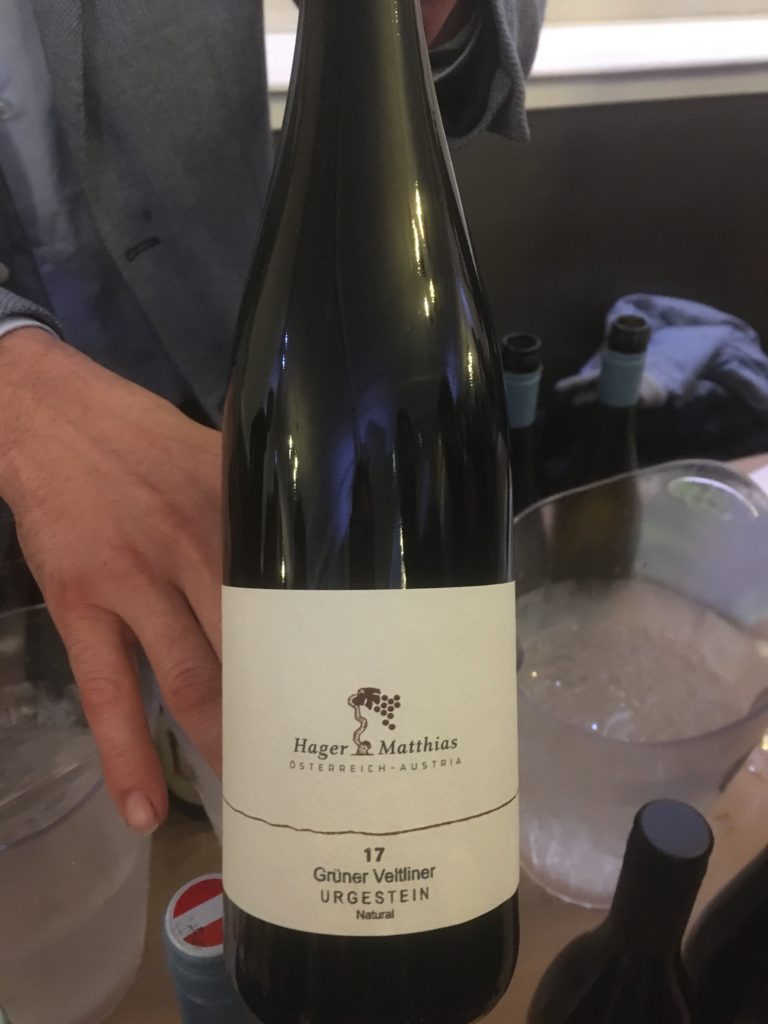
I also really liked his Riesling Pur, which is a tannic white wine, something I haven’t tasted too much of, with three weeks skin fermentation. That’s what gives it the slightly puckering quality.
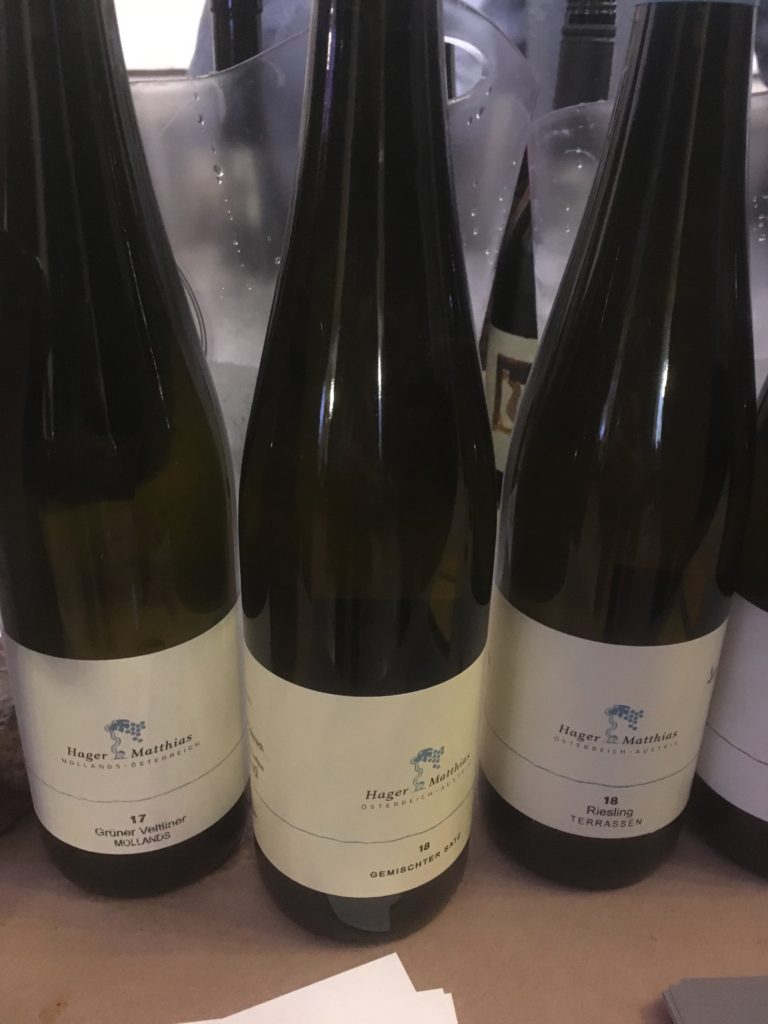
There was also a Zweigelt Pet Nat (not pictured here) that smelled like honey and jello, if that’s your thing. My pet nat-loving friend appropriately loved it.
Orange Wine
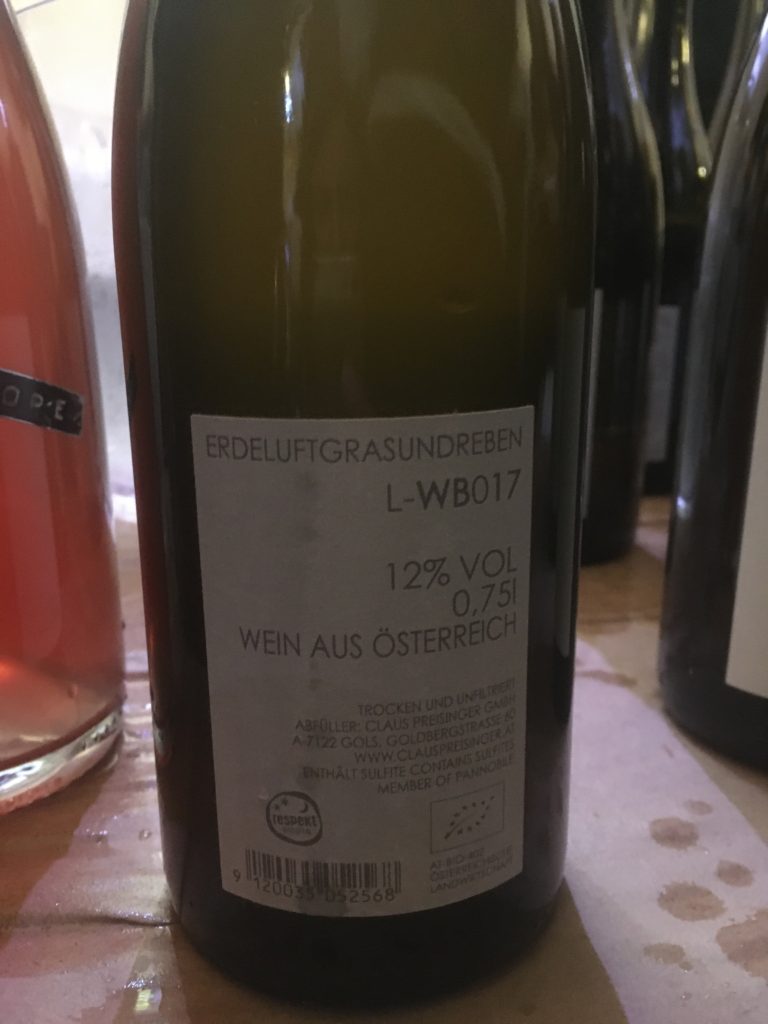
Thhe name of this skin-macerated Pinot Blanc from Claus Preisinger Winery is a mouthful: ErDELuftGRAsundreBEN 2016, to be precise. It’s made in amphora and goes for about $45 a bottle from Ward et Associés in Montreal. So not exactly your everyday bottle, but if you’re into orange wines, it’s one to try.
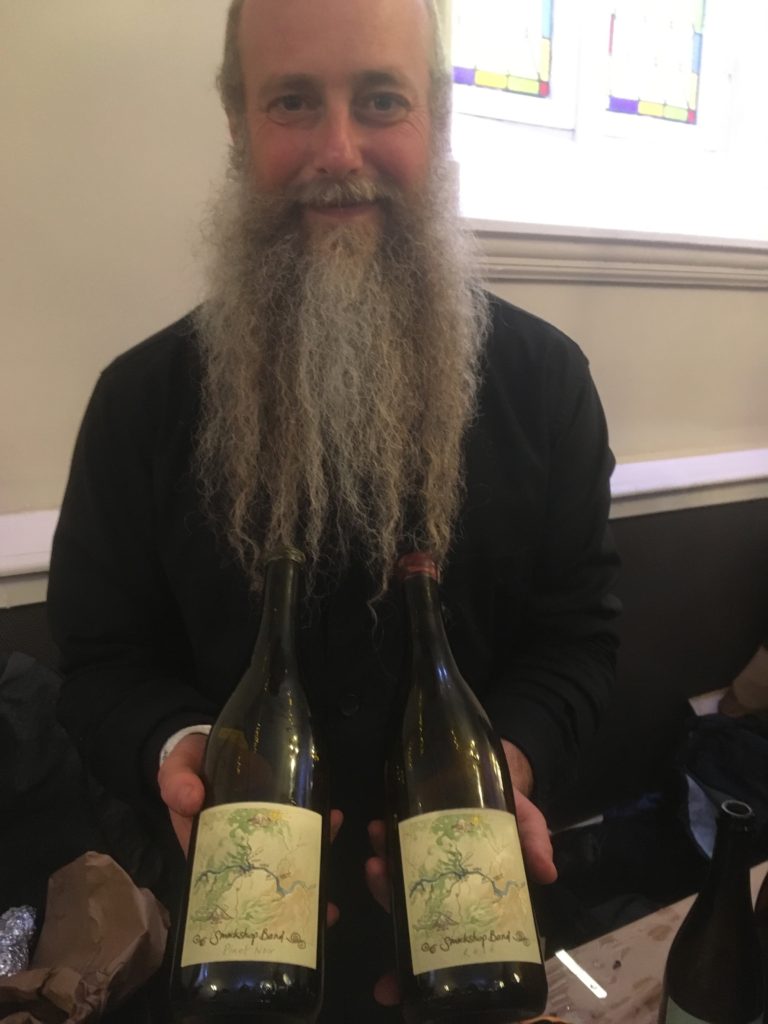
Some of the coolest wines at RAW (and that’s saying something) were from Hiyu Wine Farm. This Oregon vineyard has nothing to do with the bombastic fruit bombs you might associate with the west coast. It’s also a lot more than Pinot Noir, which you might associate with Oregon. In fact, the winery/permaculture farm grows 107 different grape varieties in Mount Hood in the Cascades about an hour east of Portland, Oregon. The mountain where the vines for the Cratageus ($70.80 from Les Vins Dame-Jeanne) that I tasted in the first conference of Day 1 at RAW is either 22 miles south or 33 miles north of the mountain. (There are a couple vineyards.) These grapes grow between ancient volcanoes, which give the grape variety based on a relation of Syrah from the Alps smoky tannins.
I said the area isn’t all about Pinot Noir, but Hiyu’s Pinot Noir was great. So was the Grenache. They are, unfortunately, expensive, around $52 and $59 a bottle respectively. So I won’t be getting a case. Still, if you ever get a chance to try any of these wines or visit the area, do it. I thought, shamefully, that these would be farm wines made by a commune of older hippies. It’s really not. These are smart winemakers doing permaculture oh so right and making exceptional wine.
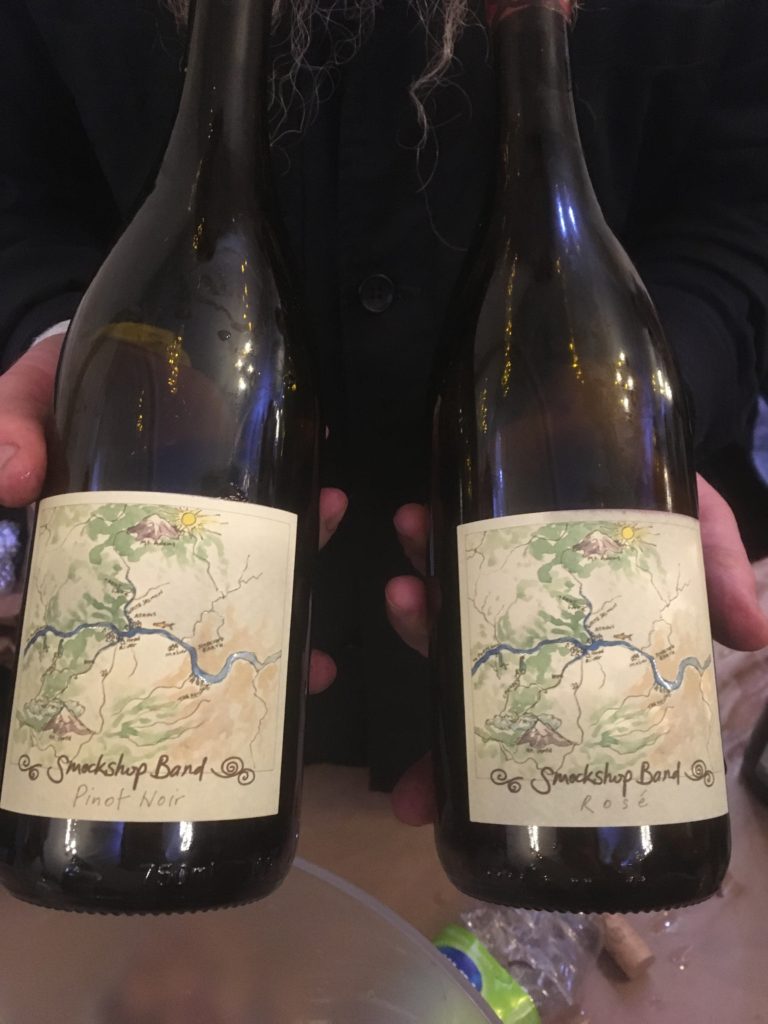
A lot of people were talking about the Greek and Macedonian wines from Jason Ligas of Domaine Ligas. There was his main winery and a side project that was a place for funky experiments. I only tried the main options because it was so packed upstairs near the booth. My favourite was the $41 Assyrtiko that had a bit of skin maceration. It was mature, sweet grapes balanced with volcanic acidity and ocean freshness that I love in Greek Assyrtiko. It reminded me of Hatzidakis’ wines that I tasted for the first time a few years ago before that winemaker passed away and passed on his vineyard to the next generation, I believe.
Beaujolais
Want some really good Beaujolais Nouveau? Check out Domaine Milan. Its Milan Nouveau is all about carbonic maceration from Mourvèdre grapes grown in limestone soil, though I preferred the Grenache Noir in the Kumo 2018 with its black currant umami. Cases from Glou in Montreal.
Rosé
I was most excited to try the Ottomani Rosato 2018 from Tuscany. I fell in love with the 2017 bottle of this last year at Hopkins in NDG and then met one of the four winemakers at RAW that year. The same winemaker was back this year and the rosé was just as exceptional, maybe a bit sweeter from a warm year, or maybe more evaporation in amphora, but maybe I just remember how perfectly it paired with everything duck (duck legs confit, smoked duck breast, seared breast, fried wings, duck sausage, etc). It was my favourite bottle of the year and I contacted Le Vin dans les Voiles, the Montreal importer, to reserve a case when the next shipment arrives in January. It’s a little under $30 a bottle. A steal.
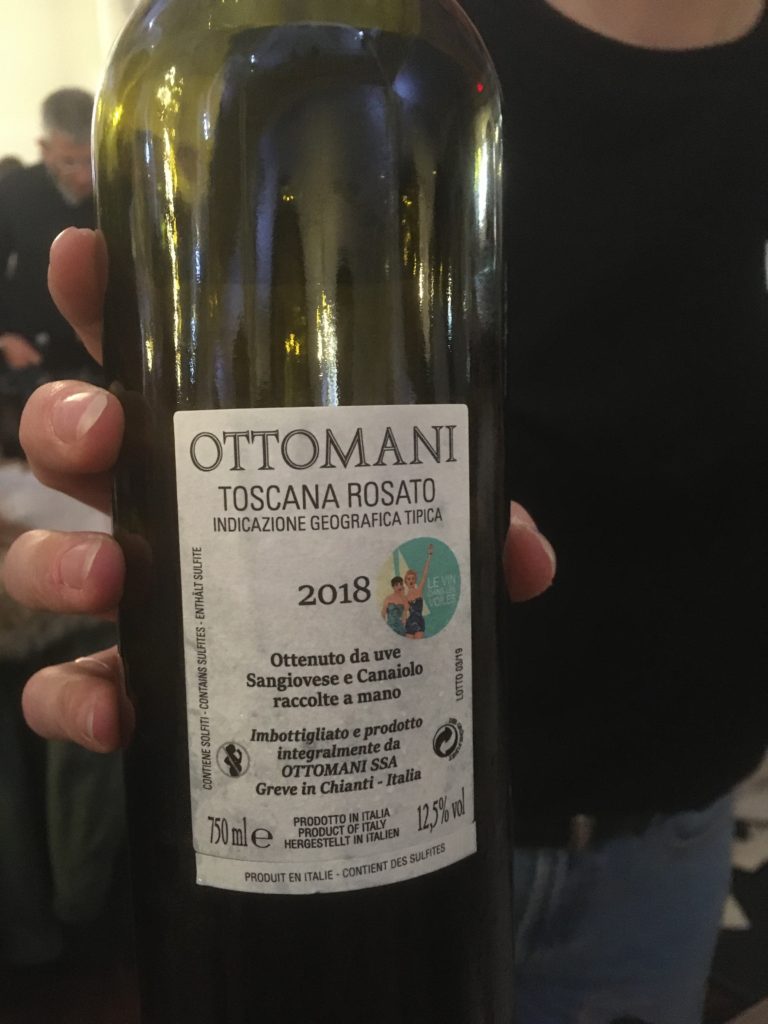
There was only one official rosé from Bandol at the salon and I didn’t love it. It was apparently from the north of the Bandol appelation, so had more of a mountain acidity than a Mediterranean beach feel.
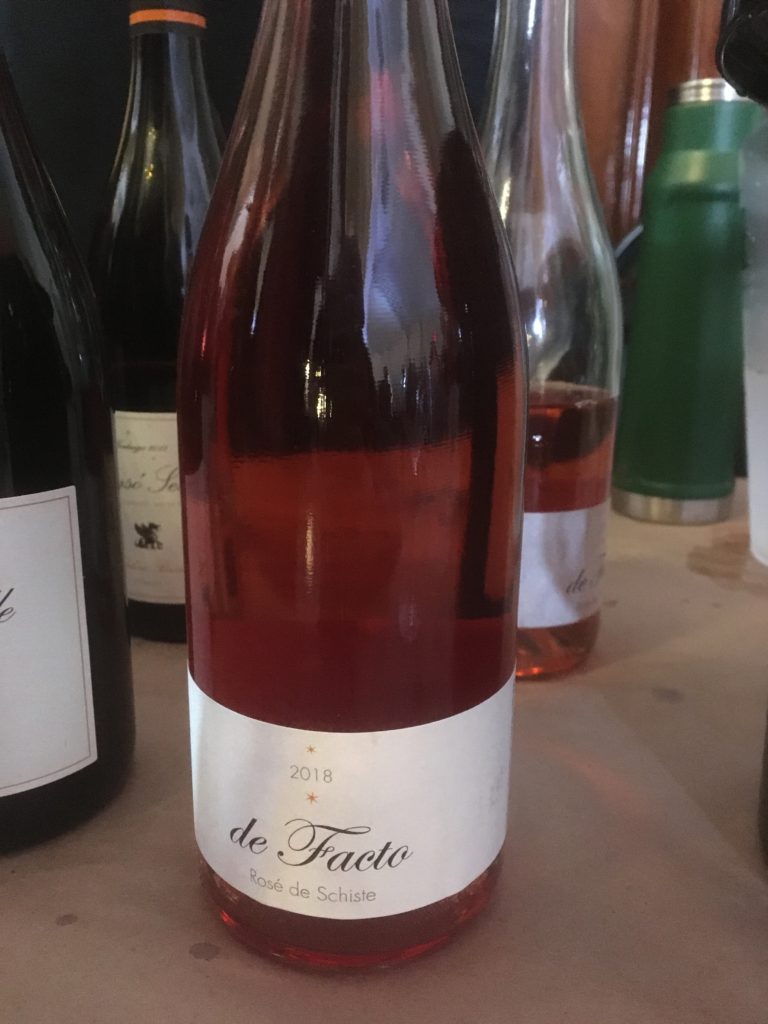
What I did love was a Grenache-Mourvèdre 2018 rosé ($26.22 from Les Vins Dame-Jeanne) from Domaine Brouca. It’s called de Facto – Rosé de Schiste and it’s from the Languedoc region. It tasted a lot like the Bandol flavour I’ve come to love: low acidity, without much sweetness but lots of floral, soft fruit and ripe, mellow grapes. Completely addictive. And perfect whether it’s spring, summer, fall or winter.
I’m not saying it tastes like a Bandol, just that it tasted more like what I like about Bandol rosé than the only Bandol rosé at the salon. And maybe that makes a little sense because Frédéric Brouca’s 14 hectares of vines (that’s tiny) are semi-mountainous and semi-Mediterranean. there’s a bit more distance between the vines because the mountain setting makes traditional rows difficult. The winemaker explained in the first conference of Day 1 that he couldn’t use tractors or cows (or fencing to ward off wild animals) because of the location and he’d like to invest in a small Italian tractor that could navigate the steep terrain.
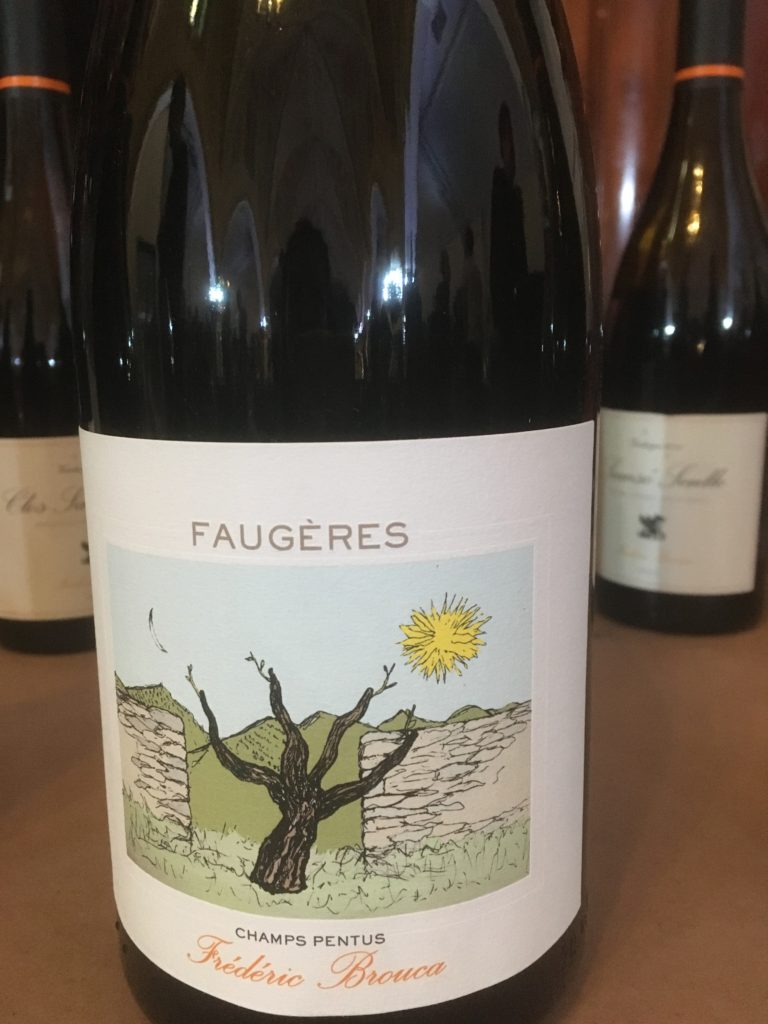
Other fun facts include that he trie using a cover crop last year, but probably won’t continue (he didn’t say why), his goal is to stimulate native grass, wheat and flowers and he once tried adding 5kg of (organic-permitted) copper to his vines to avoid a moisture pest, but found it affected the taste of the grapes and stopped. Now that’s a good winemaker. He won’t even use an organic pesticide if it hurts the wine. Oh, and his reds are wonderful and will break your stereotype that natural wines are all funk and no elegance. Try the Faugères “Champs Pentus” at $30 or Cinsault Samso Suelle at $34.37.
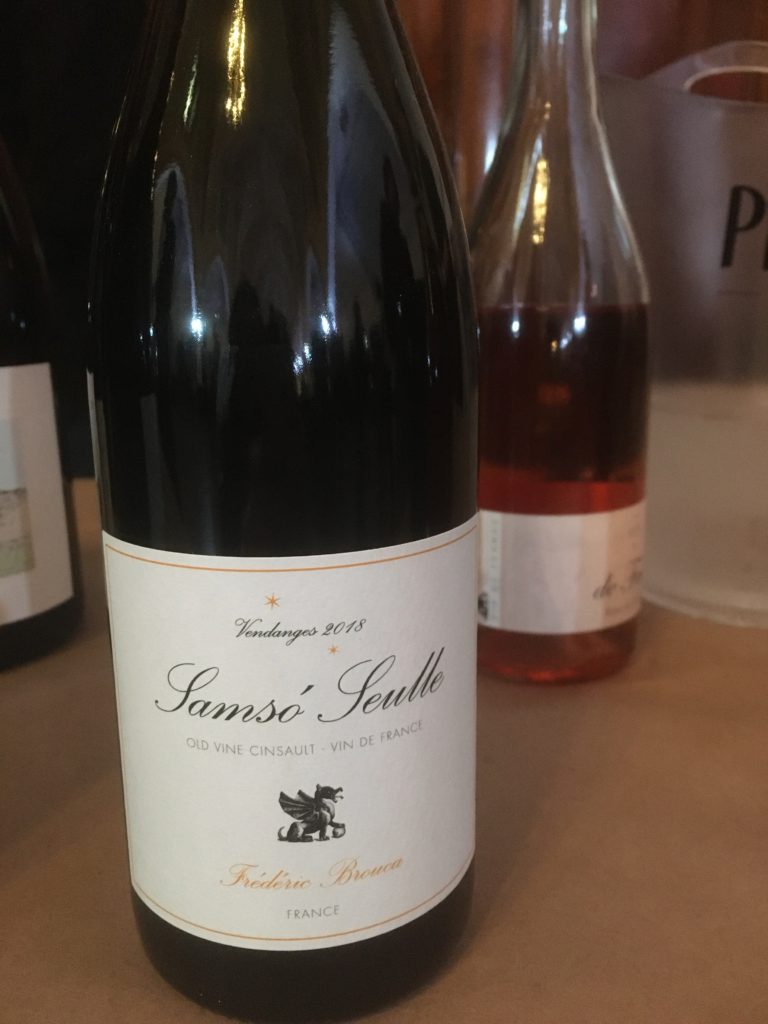
Last fun fact: He talked a bit about the history of winemaking in the area and the Catholics and Protestants who traditionally lived there. “I can almost say that the Christians plant Cinsault and the Protestants plant Carignan,” he said. Just thought that was interesting. Presumably, each thinks their wine is better. I guess Frédéric isn’t that stubborn.
Heavy Hitters
Frank Corneliessen: This Sicilian father of natural winemaking was such a popular booth that there was no wine left by the afternoon of day 1. So I came back early on day 2 to taste the line. Some friends who’d recently been to the winery on their honeymoon didn’t even get to taste the MAGMA Rosso there that costs more than $250 a bottle. I did. I’m sure it would be amazing with certain foods, but just tasting it on its own, I preferred the much less expensive (but still pricey) Munjebel Rosso Vigne Alte red (a blend of Tartaraci, Monte Dolce and Pettinociarelle) at $79.50 from Les Vins Dame-Jeanne.
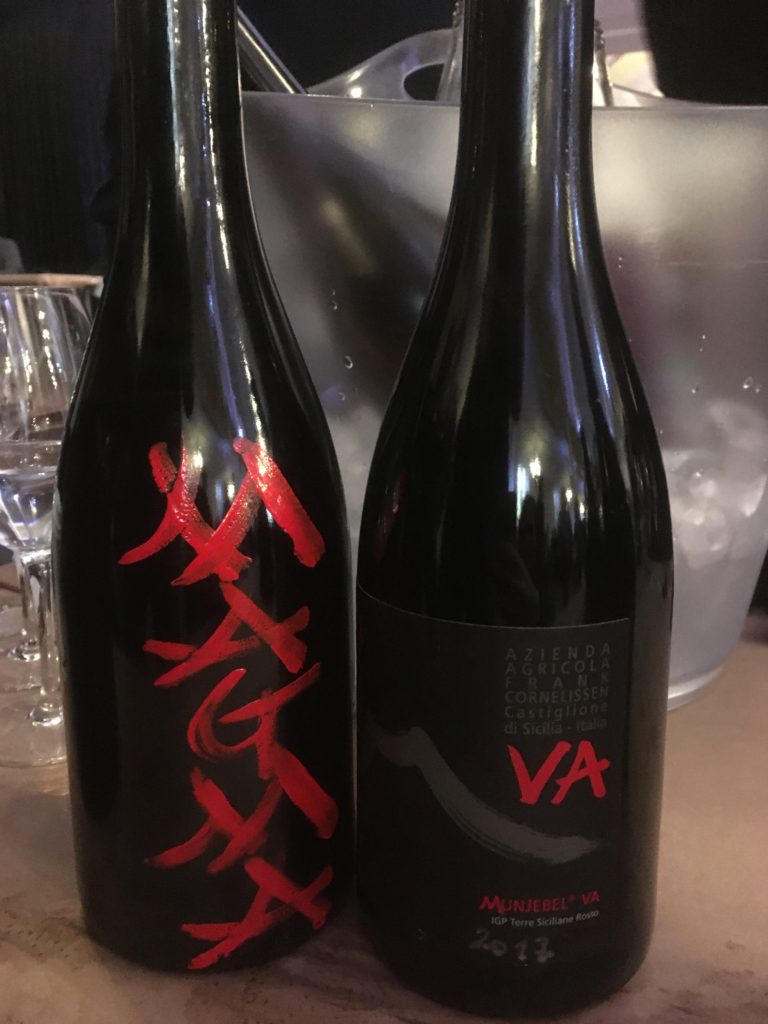
I also liked the lowest end wine from Corneliessen at the fair, his white, a Munjebel Bianco (a 60-40 blend of Grecanico and Carricante), though it was a bit sweeter than I expected. And I didn’t like all the acidity in his macerated oranges, though one of my orange wine-loving friends freaked out about them. These were great examples of volcanic Etna soil, so very age-worthy reds and refreshing whites. The reds start creeping up in price as the volcanic influence comes to the forefront. Higher elevations also bring more alcohol and tannins, which is a big part of what I didn’t like about the expensive MAGMA Rosso. I could barely unstick my tongue from my cheek, it was so tannic.
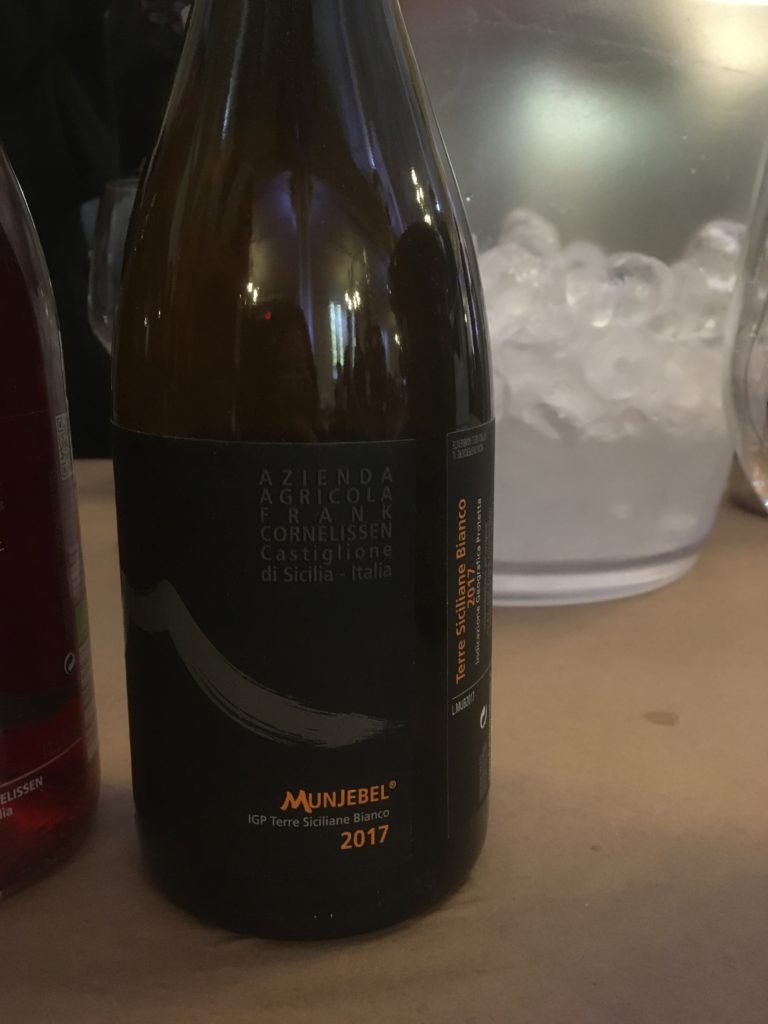
Elegant French Reds
That distaste for overly tannic red led me to love the Gabare from Domaine Grosbois. I also loved the price at $30.50 a bottle from La QV. There were three Cabernet Francs from different vineyards, and I liked the Gabare because it had opened the most after some time in the decanter. It was also a bit salty, so a great wine to go before dinner or with it, and apparently that salinity has to do with the yellow clay and sand that the vines are grown in. The grapes are also harvested earlier than other Cab Francs because there was so much heat retention that year. (It was a warm year.) Still, don’t forget to decant it to get the most out of it.
Domaine Grosbois’ more expensive Clos du Noyer ($42.25) hadn’t reached its aging potential and was pretty closed still, but give it 10 years and it’ll be a show stopper, I think.
Leave a Reply